The Southern California Society
“On Independence day, in 1894, Mr. Daniel Cleveland, of San Diego, having previously been authorized by the State Society so to do, called together the sons of Revolutionary ancestors, residing in that place, to organize the proposed local Society. The purpose of the meeting having been made known to those present, they proceeded to effect a temporary organization. A resolution was then adopted that those present associate themselves in a branch organization to be known as the Southern California Society of the Sons of the American Revolution. It was further resolved, in pursuance of the charter from the State Society, that membership should be conferred to descendants of Revolutionary sires, residing in the counties of San Diego, Riverside, San Bernardino, Los Angeles, Orange, Ventura, Kern, Santa Barbara, and San Luis Obispo, who, since January 1, 1894, had presented their applications for membership to the State Society. A committee was then appointed to draft a Constitution and By-laws, after which the meeting adjourned, subject to the call of the president.
“The Society held its next meeting August 2, 1894. A Constitution and By-laws were adopted. The meeting then adjourned till August 10, 1894. On that evening a permanent organization was effected, and permanent officers were chosen. …“. The Society took an active interest in securing patriotic instruction in the public schools of San Diego County, the observance of Flag Day, and in having the national flag raised over the schoolhouses of San Diego. The Society was actively engaged in locating and marking sites of historic interest in San Diego County and in securing historical data relating to Southern California.
Officers of the Southern California Society in 1894 were:
| President | Daniel Cleveland |
| Secretary | Walter Carnes |
| Registrar | John Sherman |
| Vice-President | Adoniram Judson Gray, M.D. |
| Treasurer | Frederick S. Plimpton |
| Managers | Frederick Baker and Charles Hubbell |

Mr. Daniel Cleveland’s father, Stephen Cleveland was a prominent New York lawyer, and his maternal great-grandfather, James Huntington, served as a Corporal in Amos Jones’ Company from Colchester, Connecticut in the Lexington alarm in April 1775. Daniel Cleveland could show that every family represented in his lineage had come to America before 1640.
Daniel was born at Poughkeepsie, New York on March 21, 1838, where he lived until 1850. He then moved to Biloxi, Mississippi to attend school. At the age of seventeen he moved to New Orleans where he was head bookkeeper in a commercial establishment for two years. In 1857 he returned to Poughkeepsie and was admitted to the bar by the Supreme Court of New York in 1859.
In May 1859, Daniel joined his older brother, William H. Cleveland, in a law practice in San Antonio, Texas. The Cleveland brothers had sworn allegiance to the Union but neither was physically fit to perform military duty. His brother William moved to San Diego to practice law, and in 1866 Daniel left San Antonio for New York to recuperate from an illness. The following year he moved to San Francisco, but in May 1869 Daniel came to San Diego. In San Diego, Cleveland plunged into his profession with vigor, and involved himself in local, cultural and civic affairs. A deeply religious person, Daniel Cleveland wasted no time in serving the Episcopal Church in many capacities. He aided the establishment of almost every parish and mission of the Episcopal Church in San Diego County.
In 1871–73, he was a director of the San Diego and Gila Southern Pacific and Atlantic Railroad Company, and of the Los Angeles and San Diego Railroad Company. In January 1889 he, and others, incorporated the Hospital of the Good Samaritan. At the same time, Cleveland, George White Marston, Marcus Schiller, Mary C. Morse, and others, incorporated the Associated Charities of San Diego. In 1892, he drew up articles of incorporation for a women’s club in San Diego, and was an advisor for the San Diego Club. In May 1895, Cleveland and Dr. George E. Abbott, house surgeon at the Hotel Del Coronado, formed the Coronado Beach Summer School—perhaps the first summer school established in Southern California. And later that same year he helped to reorganize the University Extension Society of San Diego, serving as president.
Daniel realized that the San Diego region was rich in flora and fauna. He began corresponding with Dr. Asa Gray of Harvard University, after having collected plants to send to the professor. Cleveland provided some new species, one of which was given his name; in addition he forwarded to Stanford University a new genus of fish given the name Clevelandia ios (Arrow Goby). In August 1874, he and a group of men incorporated the San Diego Society of Natural History. Cleveland served as President for some years, making large donations for its betterment. Many of the original specimens obtained by the San Diego Society of Natural History were his gifts. Salvia clevelandii was described by Asa Gray in 1874 and named for Daniel Cleveland, who had collected the “type” specimens.
Dedicated to community service, Daniel Cleveland found little time for marriage; but on July 22, 1921, at Christ Church, Coronado, he married widow Mrs. Marion South Webb. They moved into a home at 1718 Logan Avenue in San Diego. On January 3, 1929, Daniel Cleveland passed away at his home, just short of his 91st birthday and was buried in Mount Hope Cemetery
Walter Carnes was the President of the Excelsior Rowing and Swimming Club (later renamed as San Diego Rowing Club) in 1891. In 1897 he was the Secretary & General Manager of the Consolidated San Diego Water Company. He was also the secretary and treasurer of the Coronado Brick Company that produced bricks for the Hotel Del Coronado.
 John Sherman, born in Mt. Vernon, Ohio, in 1839, was a cousin of the noted Civil War veteran General William Tecumseh Sherman. Around 1887, the Sherman family moved to San Diego where he became actively involved in real estate and early building during the boom inspired by the completion of the California Southern Railroad. Sherman built the Sherman-Gilbert house on Second Avenue and Fir Street; in 1969, the house was moved to Heritage Park in Old Town. Active in church affairs, Sherman served as warden, vestryman, and clerk of the vestry for St. Paul’s Episcopal Church. The Sherman family left San Diego around 1895.
John Sherman, born in Mt. Vernon, Ohio, in 1839, was a cousin of the noted Civil War veteran General William Tecumseh Sherman. Around 1887, the Sherman family moved to San Diego where he became actively involved in real estate and early building during the boom inspired by the completion of the California Southern Railroad. Sherman built the Sherman-Gilbert house on Second Avenue and Fir Street; in 1969, the house was moved to Heritage Park in Old Town. Active in church affairs, Sherman served as warden, vestryman, and clerk of the vestry for St. Paul’s Episcopal Church. The Sherman family left San Diego around 1895.
Adoniram Judson Gray, M.D., was born in 1837 in Massachusetts and in 1837 he received his M.D. degree from Dartmouth Medical School. He served as a surgeon in the U.S. Army between 1862 and 1881. He moved to California in 1887 and died at the age of 81 in October 1918.
Frederick S. Plimpton was born in Massachusetts in 1834 and married Lucy J. Pratt in Brattleboro, VT in 1864. His SAR membership was approved on July 3, 1894 based on the service of his patriot ancestor Elijah Plimpton. He died in San Diego, CA sometime after 1900.
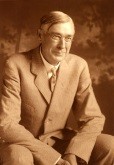 Frederick Baker, M.D., Honorary Curator of Mollusks at the Scripps Institution of Oceanography at La Jolla, was born at Norwalk, Ohio, in 1854, and died in San Diego in 1938. In 1880, he received his M.D. degree from the University of Michigan. His contributions to natural knowledge as a researcher were limited to the mollusca, chiefly as a conchologist. In this field he is widely known for his addition to knowledge of the marine fauna of Pacific North America and to that of Brazil. Of his varied efforts in behalf of institutionalized science, Baker regarded his part in the founding and operating of what is now the Scripps Institution of Oceanography, a division of the University of California, as the most important. He also served on the San Diego city council and board of education, and on the board of the then State Normal School at San Diego.
Frederick Baker, M.D., Honorary Curator of Mollusks at the Scripps Institution of Oceanography at La Jolla, was born at Norwalk, Ohio, in 1854, and died in San Diego in 1938. In 1880, he received his M.D. degree from the University of Michigan. His contributions to natural knowledge as a researcher were limited to the mollusca, chiefly as a conchologist. In this field he is widely known for his addition to knowledge of the marine fauna of Pacific North America and to that of Brazil. Of his varied efforts in behalf of institutionalized science, Baker regarded his part in the founding and operating of what is now the Scripps Institution of Oceanography, a division of the University of California, as the most important. He also served on the San Diego city council and board of education, and on the board of the then State Normal School at San Diego.
Charles Hubbell was born in Ballston, NY in 1817. He was the eighth generation descendant of Lieutenant Richard Hubbell, one of the founders of Bridgeport, Connecticut, who settled there in 1645. In 1870, Mr. Hubbell was one of the first Eastern visitors to record his name on the register of the famous Horton House, a hotel where the present U.S. Grant hotel is now located. He was a member of the committee of forty, appointed by the citizens to induce the building of a railroad to San Diego. He had a life-long interest in horticultural interests, and was secretary of the County Horticultural Society.
San Diego Chapter
In early 1910, the Southern California Society submitted an application to form a chapter within San Diego County to be known as the San Diego Chapter. The charter establishing the San Diego Chapter was signed by the California Society President Thomas Allen Perkins, a member of the San Francisco Chapter, and Secretary Edwin Bonnell on June 13, 1910. Thus, the Southern California Society was reorganized as San Diego Chapter, No. 2 of the California Society Sons of the American Revolution. The original Charter delivered to the San Diego Chapter was lost many years ago. The copy of the Charter on the next three pages was discovered by the California Society Secretary James Faulkinbury as reflected in the minutes of the California Society in 2010.
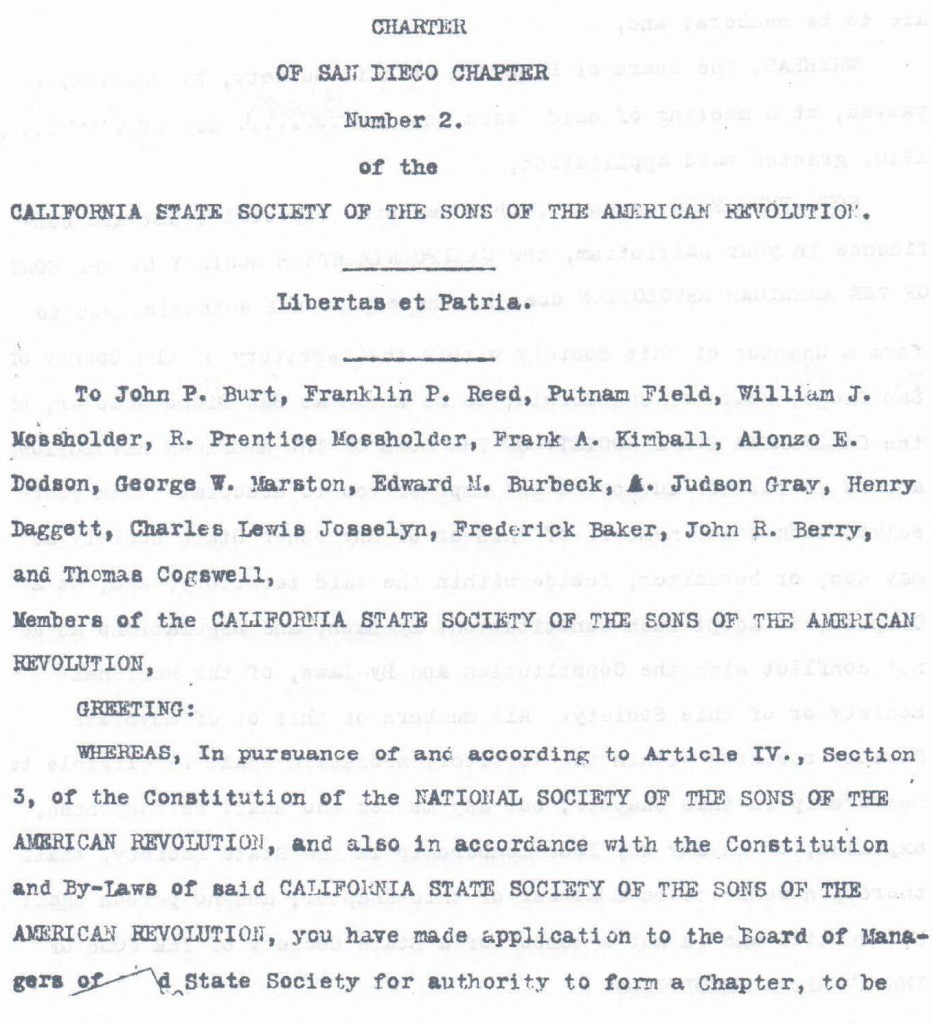

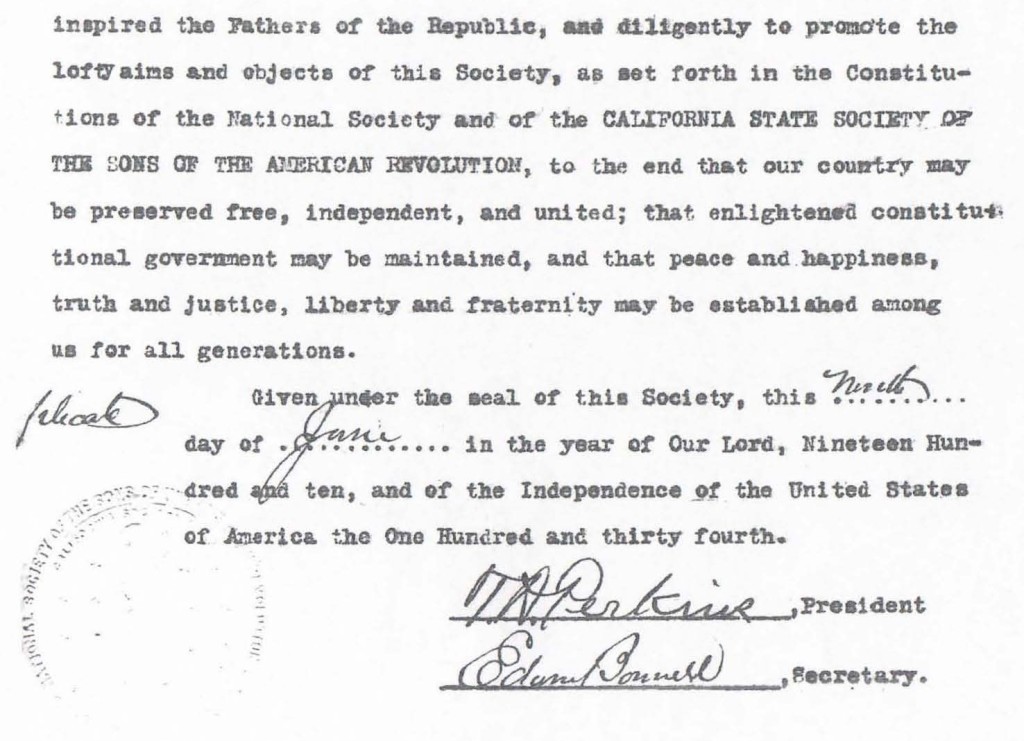
Compatriot W. L. Mossholder, a San Diego pioneer lawyer, served as President. The following officers were elected at the chapter’s initial meeting.
| President | W.J. Mossholder |
| Vice-Presidents | A.E. Dodson and Franklin P. Reed |
| Secretary | John R. Berry |
| Treasurer | John P. Burt |
| Marshal | Charles A. Joslyn |
| Chaplain | Dr. A. Judson Gray |
| Historian | Ed. M. Burbeck |
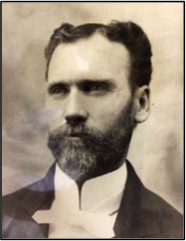 Judge William John Mossholder, a prominent San Diego Attorney, served as the last President of the Southern California Society of the Sons of the American Revolution in 1909–10, and became the first President of the reorganized San Diego Chapter, No. 2 of the California Society of the Sons of the American Revolution on June 13, 1910, which had about twenty members at the time.
Judge William John Mossholder, a prominent San Diego Attorney, served as the last President of the Southern California Society of the Sons of the American Revolution in 1909–10, and became the first President of the reorganized San Diego Chapter, No. 2 of the California Society of the Sons of the American Revolution on June 13, 1910, which had about twenty members at the time.
He was born August 27, 1857 in Martinsburg, Knox County, Ohio, the son of Squire Humphrey Mossholder and Mary Eliza (Robinson) Mossholder. His great-grandfather, John Mossholder, served as a private in Captain Young’s Company, 8th Cumberland, Bedford, Somerset, and Westmoreland Counties, Pennsylvania. Based on the service of John Mossholder, William became a member of the Sons of the American Revolution on July 21, 1909. One of his two sons, Rusk Prentice Mossholder, became a member of the San Diego Chapter, SAR on September 15, 1909.
William graduated from Nebraska Wesleyan University and received a law degree from the University of Iowa. He was admitted to the Supreme Court of Iowa and to the United States courts. On September 26, 1881, he married Jennie Prentice at Viroqua, Wisconsin. In December 1885, the Mossholder family moved to San Diego, California and he formed a law partnership with the Honorable Watson Parrish. He had a long and distinguished legal career arguing cases before the California Supreme Court. William belonged to numerous commercial associations and public improvement societies. He was active in the Masonic Lodge and served in a variety of offices, including the Master of San Diego Lodge No. 35 in 1892–93. The Supreme Council of Scottish Rite Masons in Washington, D.C. bestowed the honorary title Knight Commander of the Court of Honor.
Judge W. J. Mossholder was selected as one of the speakers for the Panama-California Exposition event scheduled in Balboa Park for Washington’s Birthday, February 22, 1917. Unfortunately, rain forced the organizers to postpone the celebration to February 25. Judge Mossholder, an officer of the Sons of the American Revolution, praised the American colonialists who wrested their independence from Great Britain. He was followed by soloists who sang songs stressing love of country and of freedom. Judge Mossholder passed from this life at the age of 85 on April 10, 1943 and is buried in Mount Hope Cemetery, as is his wife Jennie and sons Mark Prentice and Rusk Prentice.
A.E. Dodson was the President of the San County Fair Association. He served as a City Councilman 1907 – 1912. In 1910, he served as the Superintendent of the Department of Fires and Sewers. He operated an insurance agency representing a variety of insurance companies, served as a Notary Public, and dealt in government lands and pension claims. Franklin P. Reed was a machine operator at many companies in San Diego and was a member South West Lodge No. 283 F&AM.
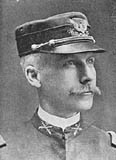 John R. Berry served at different times as the editor of the San Diego Union and was a Colonel in the Seventh Regiment, National Guard, during the Spanish War. John P. Burt served as County Assessor 1895-1898, was a director of the San Diego Savings and Loan Association, and was a founding member of San Diego Commandery #25 Knights Templar. Edward M. Burbeck was a partner in the Dodge & Burbeck, a bookstore and stationery store in downtown San Diego. A business card for “Edward M. Burbeck, Bookseller & Stationer” was found in a time capsule opened October 30, 1997.
John R. Berry served at different times as the editor of the San Diego Union and was a Colonel in the Seventh Regiment, National Guard, during the Spanish War. John P. Burt served as County Assessor 1895-1898, was a director of the San Diego Savings and Loan Association, and was a founding member of San Diego Commandery #25 Knights Templar. Edward M. Burbeck was a partner in the Dodge & Burbeck, a bookstore and stationery store in downtown San Diego. A business card for “Edward M. Burbeck, Bookseller & Stationer” was found in a time capsule opened October 30, 1997.
List of Southern California Society and San Diego Chapter Past Presidents
1894 – 1908 Daniel Cleveland President
1909 – 1912 W. L. Mossholder
1913 Horace B. Day
1914 – 1915 George W. Marston
1916 Ernest Claudius Hickman
1917 Herbert Ruggles Fay, LtCol
1918 Charles Shubael Gurley
1919 Henry B. Adsit
1920 Fitz-Henry W. Drummond
1921 Henry B. Adsit
1922 Fred Baker, MD
1923 David W. Schick
1924 Leon Royden Briggs, MD
1925 Robert C. Stone
1926 James R. Comly
1927 Charles M. Frost, LtCol
1928 Willis W. Brown
1929 – 1930 J. H. Pendleton, MGen USMC
1931 Rev. Howard C. Dunham
1932 Henry C. Gardiner
1933 E. E. Scranton CDR USN
1934 Allen H. Wright
1935 Riley Richmond Jackson
1936 Charles J. Creller
1937 – 1938 Rev. A. Watson Brown
1939 – 1940 Jesse B. Gay, Capt
1941 Charles S. Gurley
1942 – 1943 James A. Irwin
1944 Rev. A. Watson Brown
1945 – 1946 Dr. George F. McEwan (Scripps)
1947 Bertrand John Schaeffer
1948 Dr. Harvey C. Cox
1949 Everett N. Curtis, Judge
1950 – 1951 Frederic C. Skillman
1952 James E. Wells
1953 – 1954 MacArthur Gorton
1955 Lester B. Orr
1956 Rolin W. Shaw, Col.; Judge R. J. Donavan, Jr.
1957 Judge R. J. Donavan, Jr.; Dr. Ralph S. Roberts
1958 Clarence E. Johnson
1959 Joseph E. Rowland
1960 Robert S. Davis, ADM
1961 Lara P. Good, BGen
1962 John H. Crippen, Jr.
1963 Earl Van Dusen
1964 Lloyd M. Harmon
1965 – 1969 Frank Wick
1970 Ralph M. Pray, Capt.
1971 Glen E. Vasel
1972 Glenn I. Epperson
1973 Richard A. Sutton
1974 Cyril B. Davis
1975 Richard A. Sutton
1976 Thomas S. Darby, Jr.
1977 William J. Poyser
1978 Robert W. Stevens
1979 – 1981 David A. Young
1982 Earl F. Rawlings, LCDR USN (Ret)
1983 Jack V. Ferguson, LtCol, USAF (Ret)
1984 Walter F. Kerrigan, Esq.
1985 Paul H. Davis
1986 Rev. H. Harris Wood
1987 Charles D. Conyers, I
1988 W. James Switzer
1989 Robert L. Dodge, Col. USAF (Ret)
1990 Duane W. Wheeler, CPA
1991 Harold L. Worrell, CWO3, USN (Ret)
1992 Frederick R. Rupert CWO4, USN (Ret)
1993 Travis E. Spears
1994 George D. Ish, LTC USA (Ret)
1995 Carl H. Lamb LCDR USN (Ret)
1996 Robert J. Gorton LCDR, USN (Ret)
1997 Nelson D. Price EdD
1998 Rev Dr. Stanley W. DeLong CDR USN (Ret)
1999 Robert M. Carlson
2000 Maurice E. Masters, DDS
2001 David W. DeLong
2002 Michael A. Schooling
2003 John K. Wetter LtCol USMC (Ret)
2004 Philip L. Hinshaw, EMCM USN (Ret)
2005 William E. Tisch
2006 James E. Mattern, ABCM USN (Ret)
2007 Dennis A. Cushman
2008 – 2009 Michael J. Howard
2010 Al Ludwig
2011 Clement Hoffman; Ernest Bray
2012 Edward Rudisill
2013 Robert Fagaly
2014 – 2015 Raymond C. Raser
Notable Presidents
George White Marston
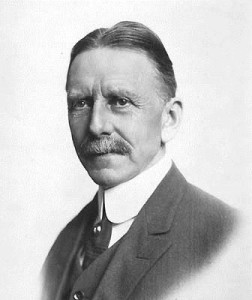 George White Marston served as President of the San Diego Chapter from 1914–1915. He was born in Fort Atkinson, Wisconsin on October 22, 1850. His father had a chronic respiratory ailment which brought them to San Francisco in 1870 and then on the side wheeler SS Senator to San Diego. George lived here until his death on May 31, 1946.
George White Marston served as President of the San Diego Chapter from 1914–1915. He was born in Fort Atkinson, Wisconsin on October 22, 1850. His father had a chronic respiratory ailment which brought them to San Francisco in 1870 and then on the side wheeler SS Senator to San Diego. George lived here until his death on May 31, 1946.
The Marston Company was the only major department store in San Diego for many years. Its success was due to exclusive business arrangements with many of his suppliers. He became quite wealthy and was a generous philanthropist in the city and throughout Southern California.
In 1902, Marston donated $10,000 so the City of San Diego Park Commission could hire Samuel Parsons, landscape architect for the City of New York, to prepare the first comprehensive plan for Balboa Park. Later, he again contributed his personal funds so that the City Council could hire John Nolen, one of the nation’s outstanding city planners. Nolen prepared the city’s first comprehensive plan in 1908 and returned in 1926 to draw up a more detailed plan which was adopted as a guide to San Diego’s urban development.
In 1907, Compatriot Marston and other businessmen bought many lots on Presidio Hill for the purpose of pre-serving the remnants of the San Diego Presidio of San Diego. They covered the ruins of the presidio with earth to preserve it until proper archaeological excavations could be completed. After the City of San Diego declined to accept their offer to accept the land as park, George Marston bought out his business partners. He then commissioned William Templeton Johnson to design a headquarters building for the San Diego Historical Society. The building was dedicated in 1929. Several years later the City accepted the property as Presidio Park. Later the building was transformed into the Serra Museum.
Irving Gill designed Marston’s home on 7th Avenue north of Balboa Park. Irving Gill and Mr. Marston conferred extensively through the early planning period of the 1915 Panama-California Exposition in Balboa Park. Marston served as chairman of the Building and Grounds Committee for the Exposition.
Marston served on the first board of trustees for the San Diego Public Library in 1882 and founded the San Diego YMCA and served as its president for 22 years. He founded the San Diego Historical Society and served as its first President. He also raised funds and provided his own money to buy land for present day Torrey Pines State Reserve and Anza-Borrego Desert State Park.
Marston was a businessman and a philanthropist. He opened a reading room in his dry goods store to promote education for all ages. His wife, Anna Lee Gunn, was a school teacher. Together they had five children. Anna’s uncle, Douglas Gunn was editor of the San Diego Union. George Marston died at age 95 at his home in San Diego. He is interred in Mount Hope Cemetery. For the eulogy at his funeral, James A. Blaisdell spoke of Marston’s impact on Balboa Park, “Just around the corner lies the central Balboa Park of the city — walks that he laid out — flowers that he planted — trees that he loved — vistas that he foresaw — beautiful buildings that he envisioned. … This paradise was not here when George Marston came [in 1870]. In this park he speaks to thousands whose lives have been made happier through him.”(Wikipedia, December 6, 2015).
Major General Joseph H. Pendleton USMC
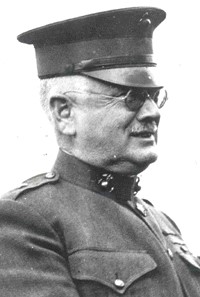 Joseph Henry Pendleton graduated from the United States Naval Academy, Annapolis, Maryland and was appointed a second Lieutenant on July 1, 1884. His first assignment was at the Marine Barracks, Brooklyn Naval Yard, followed by the Portsmouth Naval Ship-yard in New Hampshire where he joined the USS Pensacola March 20, 1885. Three years later he reported back to the Marine Barracks, Brooklyn Naval Yard.
Joseph Henry Pendleton graduated from the United States Naval Academy, Annapolis, Maryland and was appointed a second Lieutenant on July 1, 1884. His first assignment was at the Marine Barracks, Brooklyn Naval Yard, followed by the Portsmouth Naval Ship-yard in New Hampshire where he joined the USS Pensacola March 20, 1885. Three years later he reported back to the Marine Barracks, Brooklyn Naval Yard.
Promoted to First Lieutenant on June 28, 1891, at the outbreak of the Spanish American War, he served on the converted cruiser USS Yankee, taking part in the bombardment of Santiago, Cuba. He was promoted to the rank of Captain on March 3, 1899 and Major on March 3, 1903. He joined the First Marine Brigade on May 28, 1904 in the Philippine Islands. From February to July 1906, Major Pendleton commanded the Marine Barracks, Guam. He was transferred to the Marine Barracks, Puget Sound, Bremerton, Washington for the next three years. Advanced to the rank of Lt. Colonel on January 1, 1908 he was again assigned to the First Marine Brigade in the Philippines on November 4 of the following year. He was assigned as Commanding Officer and then as Post Commander and ultimately as Commanding Officer, First Marine Regiment, Olongapo, PI. On May 23, 1911, he was promoted to Colonel. He remained in the Philippines for another year. In May 1912, he was detached and returned to the United States via the Suez Canal and Europe. He reported for duty in August at the Marine Barracks, Portsmouth, New Hampshire. He was sent on temporary foreign duty as the commander of all Marine forces in Nicaragua. He commanded skirmishes at Masaya and Chichigalpa and the capture of Coyotepe and Leon all of which hold high places in Marine Corps history. He followed these exploits in 1913 with the expeditionary force at Guantanamo Bay, Cuba. In September of that year he was ready for a quieter assignment again this time as Commanding Officer of the Marine Barracks, Puget Sound, Bremerton, Washington. But again, he was sent on expeditionary duty serving a good part of the time as the Commanding Officer of the 4th Regiment aboard the USS South Dakota and the USS Jupiter. The regiment moved ashore on July 10, 1914 at North Island, San Diego.
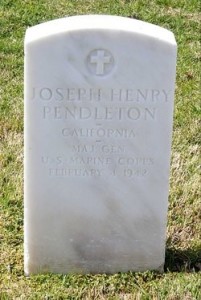 His love affair with the San Diego area began when as he recognized the value it had as a Marine Corps Advance Base on the West Coast, which he openly advocated for the next ten years. The Marine Corps was well ensconced in the area by the time he retired on June 2, 1924, at the age of 64 after 46 years distinguished service. He served as Mayor of Coronado from 1928–1930 and San Diego Chapter President 1929–1930. He died on February 4, 1942, at age 81 in his Coronado home and is buried in Fort Rosecrans National Cemetery.
His love affair with the San Diego area began when as he recognized the value it had as a Marine Corps Advance Base on the West Coast, which he openly advocated for the next ten years. The Marine Corps was well ensconced in the area by the time he retired on June 2, 1924, at the age of 64 after 46 years distinguished service. He served as Mayor of Coronado from 1928–1930 and San Diego Chapter President 1929–1930. He died on February 4, 1942, at age 81 in his Coronado home and is buried in Fort Rosecrans National Cemetery.
SOURCE DOCUMENTS
“Register of the California Society of the Sons of the American Revolution, Instituted at San Francisco, California, October 22d, 1875 as Sons of Revolution Sires” published in San Francisco, California 1901.” In the 120th Anniversary of the San Diego Chapter of the Sons of the American Revolution Souvenir Handout, October 25, 2014, edited by Ms. Karon Jarrard, Corresponding Secretary General of the Daughter of the American Revolution.
Sons of the American Revolution. December 1, 2015. Available at: https://en.wikipedia.org/wiki/Sons_of_the_American_Revolution. Accessed on December 1, 2015.
Sons of the American Revolution. Undated. Available at: https://pittsar.wordpress.com/about/history/sons-of-the-american-revoloution/. Accessed on December 1, 2015.
Spears, Travis E. 2003. Information extracted from Register of the California Society SAR, 1901, and “Official Bulletin” NSSAR (SAR Magazine), October 1910.
“The Origins of the SAR”. Posted: April 11, 2009, Last updated: June 23, 2009. Available at: https://www.sar.org/About/Origins. Accessed on November 30, 2015.
ATTACHMENT A
TITLE 36 USC. PATRIOTIC SOCIETIES AND OBSERVANCES
CHAPTER 1C–SONS OF THE AMERICAN REVOLUTION
Sec. 20a. Corporation created
Francis Henry Appleton, of Massachusetts; Lucius P. Deming, of Connecticut; William Seward Webb, of Vermont; Horace Porter, of New York; Joseph C. Breckinridge, of Washington, District of Columbia; Franklin Murphy, of New Jersey; Walter S. Logan, of New York; Edwin Warfield, of Maryland; Edwin S. Greeley, of Connecticut; James D. Hancock, of Pennsylvania; Morris B. Beardsley, of Connecticut; John C. Lewis, of Kentucky; Henry Stockbridge, of Maryland; Nelson A. McClary, of Illinois; A. Howard Clark, of Washington, District of Columbia; Isaac W. Birdseye, of Connecticut; William K. Wickes, of New York; J. W. Atwood, of Ohio; J. W. Whiting, of Alabama; Ricardo E. Miner, of Arizona; Joseph M. Hill, of Arkansas; Alexander G. Eells, of California; Clarkson N. Guyer, of Colorado; Jonathan Trumbull, of Connecticut; Thomas F. Bayard, of Delaware; William H. Bayly, of Washington, District of Columbia; William S. Keyser, of Florida; Charles M. Cook, of Hawaii; Inman H. Fowler, of Indiana; Eugene Secor, of Iowa; John M. Meade, of Kansas; Peter F. Pescud, of Louisiana; Waldo Pettengill, of Maine; James D. Iglehart, of Maryland; Moses G. Parker, of Massachusetts; Rufus W. Clark, of Michigan; James C. Haynes, of Minnesota; Ashley Cabell, of Missouri; Ogden A. Southmayd, of Montana; Amos Field, of Nebraska; Daniel C. Roberts, of New Hampshire; J. Franklin Fort, of New Jersey; William A. Marble, of New York; Isaac F. Mack, of Ohio; Henry H. Edwards, of Oklahoma; Thomas M. Anderson, of Oregon; William L. Jones, of Pennsylvania; John E. Studely, of Rhode Island; Theodore G. Carter, of South Dakota; J. A. Cartwright, of Tennessee; I. M. Standifer, of Texas; Fred A. Hale, of Utah; Henry D. Holton, of Vermont; Lunsford L. Lewis, of Virginia; Cornelius H. Hanford, of Washington; J. Franklin Pierce, of Wisconsin; Truman G. Avery, of New York; William W. J. Warren, of New York; Henry V. A. Joslin, of Rhode Island; John Paul Earnest, of Washington, District of Columbia; A. S. Hubbard, of California, and all such other persons as may from time to time be associated with them, and their successors, are hereby constituted a body corporate and politic, in the city of Washington, in the District of Columbia, by the name of the National Society of the Sons of the American Revolution.
Sec. 20b. Purposes of corporation
The purposes and objects of corporation are declared to be patriotic, historical, and educational, and shall include those intended or designed to perpetuate the memory of the men who, by their services or sacrifices during the war of the American Revolution, achieved the independence of the American people;
- to unite and promote fellowship among their descendants
- to inspire them and the community at large with a more profound reverence for the principles of the Government founded by our forefathers
- to encourage historical research in relation to the American Revolution; to acquire and preserve the records of the individual services of the patriots of the war, as well as documents, relics, and landmarks
- to mark the scenes of the Revolution by appropriate memorials; to celebrate the anniversaries of the prominent events of the war and of the Revolutionary period; to foster true patriotism
- to maintain and extend the institutions of American freedom, and to carry out the purposes expressed in the preamble to the Constitution of our country and the injunctions of Washington in his farewell address to the American people.
Sec. 20d. Trustees
The property and affairs of said corporation shall be managed by not less than forty trustees, who shall be elected annually at such time as shall be fixed in the by-laws, and at least one trustee shall be elected annually from a list of nominees to be made by each of the State societies and submitted to this society at least thirty days before the annual meeting, in accordance with general provisions regulating such nominations as may be adopted by this society.
Section 20e, Act June 9, 1906, c. 3065, Sec. 5, 34 Stat. 228 is related to the procedure for calling the first meeting of the Sons of the American Revolution.
Section 20f, Act June 9, 1906, c. 3065, Sec. 6, 34 Stat. 228 is related to the procedure for the acceptance of the charter of the Sons of the American Revolution.
Sec. 20g. Reservation of right to amend or repeal chapter.